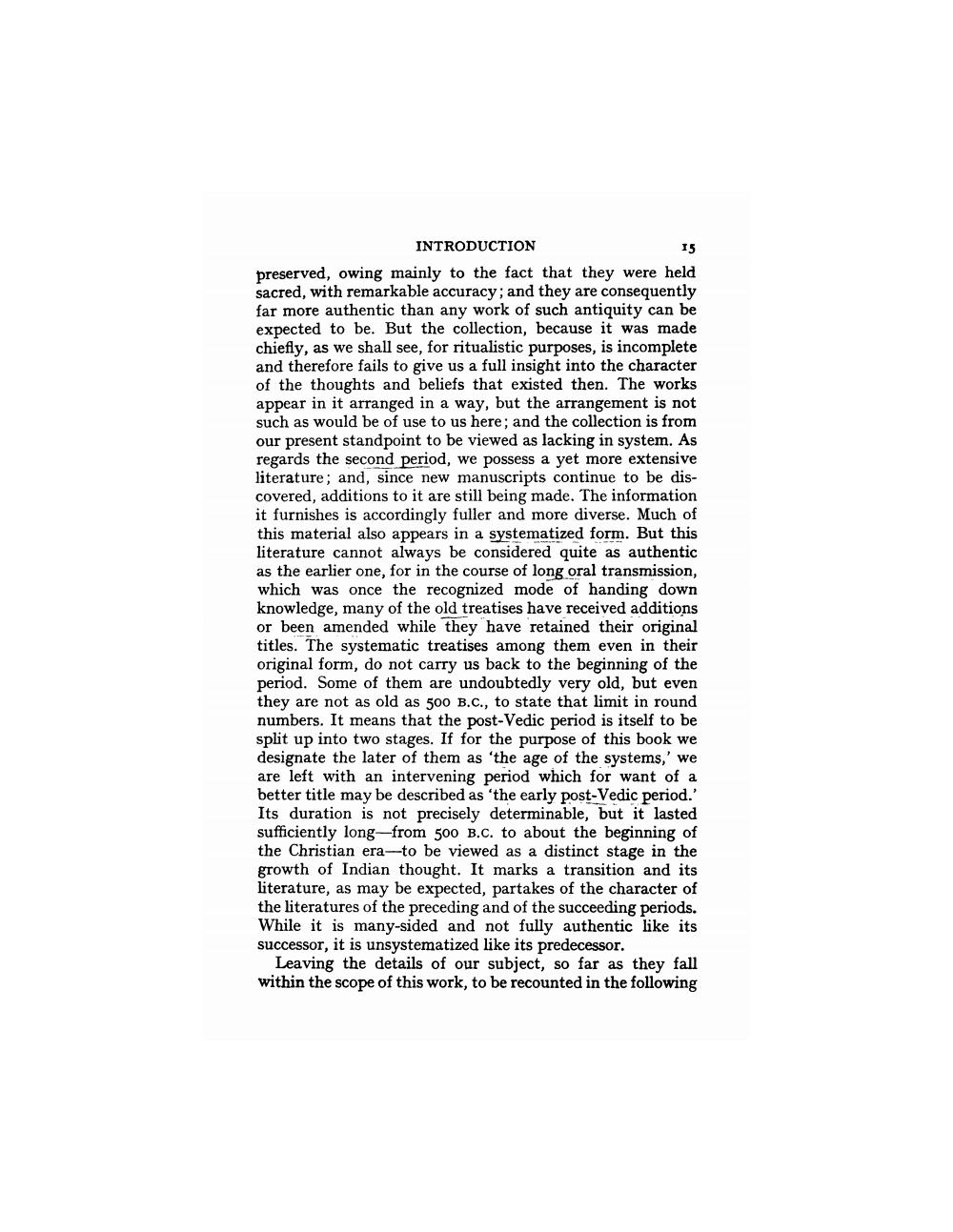________________
15
INTRODUCTION preserved, owing mainly to the fact that they were held sacred, with remarkable accuracy; and they are consequently far more authentic than any work of such antiquity can be expected to be. But the collection, because it was made chiefly, as we shall see, for ritualistic purposes, is incomplete and therefore fails to give us a full insight into the character of the thoughts and beliefs that existed then. The works appear in it arranged in a way, but the arrangement is not such as would be of use to us here, and the collection is from our present standpoint to be viewed as lacking in system. As regards the second period, we possess a yet more extensive literature; and, since new manuscripts continue to be discovered, additions to it are still being made. The information it furnishes is accordingly fuller and more diverse. Much of this material also appears in a systematized form. But this literature cannot always be considered quite as authentic as the earlier one, for in the course of long oral transmission, which was once the recognized mode of handing down knowledge, many of the old treatises have received additions or been amended while they have retained their original titles. The systematic treatises among them even in their original form, do not carry us back to the beginning of the period. Some of them are undoubtedly very old, but even they are not as old as 500 B.C., to state that limit in round numbers. It means that the post-Vedic period is itself to be split up into two stages. If for the purpose of this book we designate the later of them as 'the age of the systems,' we are left with an intervening period which for want of a better title may be described as 'the early post-Vedic period.' Its duration is not precisely determinable, but it lasted sufficiently long-from 500 B.C. to about the beginning of the Christian era-to be viewed as a distinct stage in the growth of Indian thought. It marks a transition and its literature, as may be expected, partakes of the character of the literatures of the preceding and of the succeeding periods. While it is many-sided and not fully authentic like its successor, it is unsystematized like its predecessor.
Leaving the details of our subject, so far as they fall within the scope of this work, to be recounted in the following




